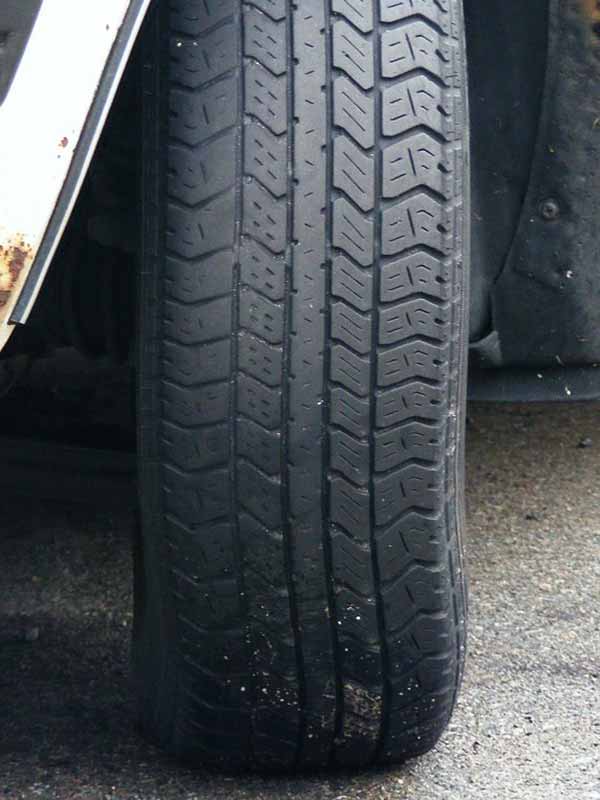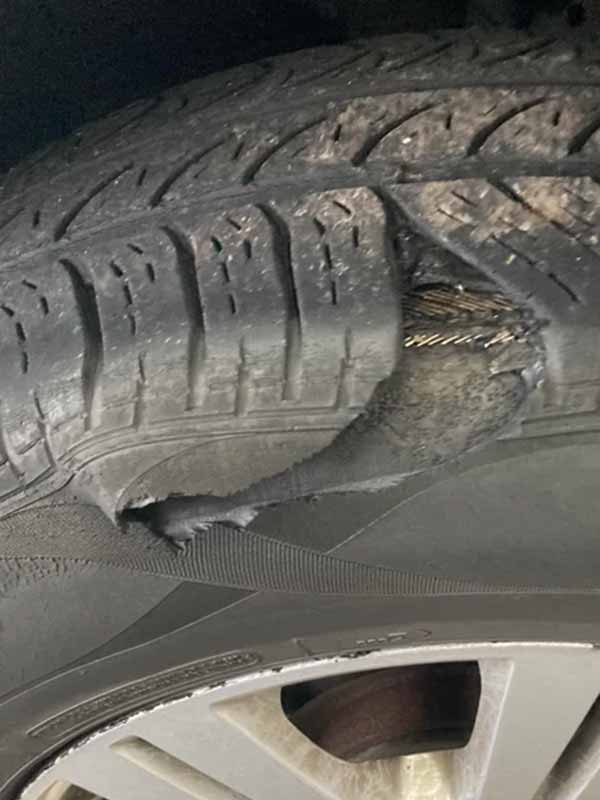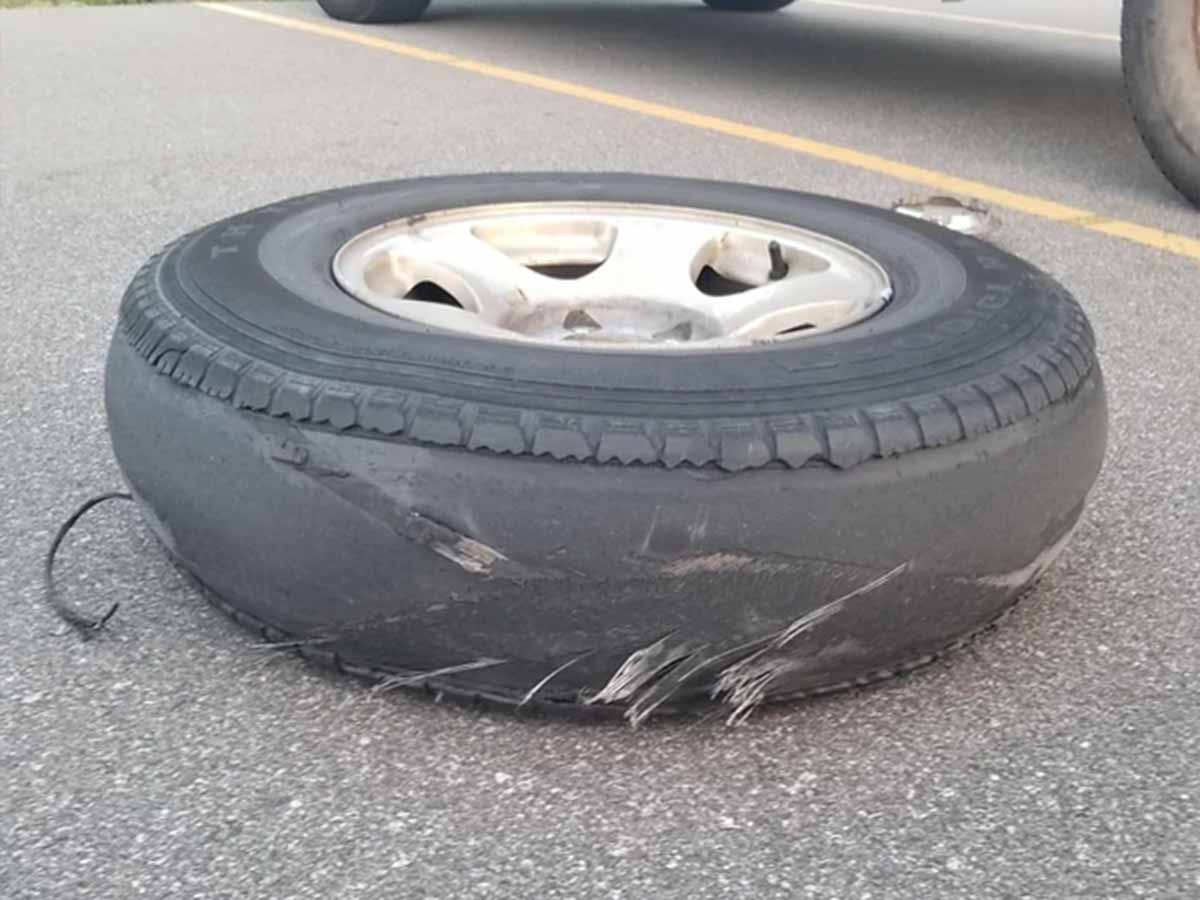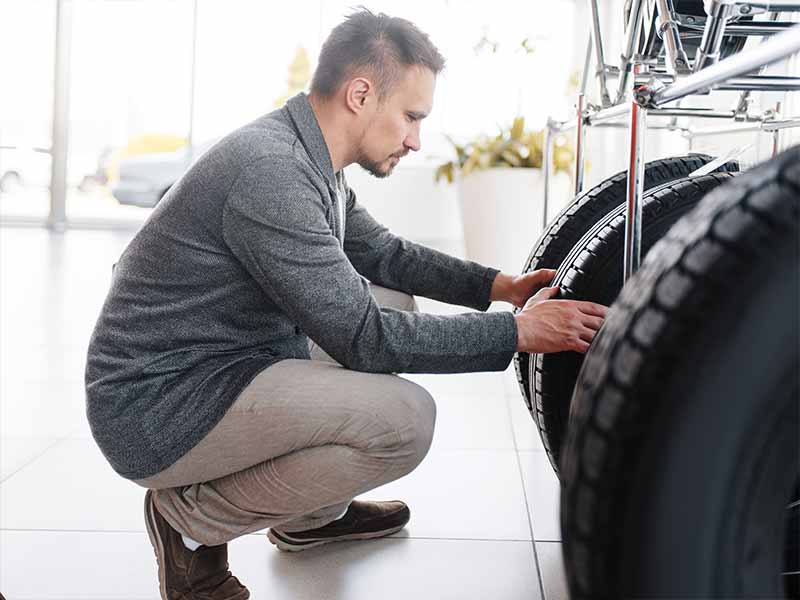Driving is an adventure, but every adventure has its risks. Picture this: You’re cruising down the highway, jamming to your favorite tunes, when suddenly, your car begins to shake. The steering wheel vibrates in your hands, and there’s an unsettling rumbling noise. If you don’t find a tire puncture, you could be dealing with tire separation – a serious issue many drivers face.
Tire Separation
Tire separation is a dangerous condition where the different layers of a tire begin to detach from one another. It can cause vibrations, noise, wobbling, and, in severe cases, tire blowouts leading to accidents.
In this article, we delve into the world of tires, uncovering the ins and outs of tire separation. We’ll discuss what tire tread separation is, its causes, how to identify it, the risks of driving on a separated tire, how to fix it, and, most importantly, how to prevent it. With a mix of expert knowledge and plain language, we’ll arm you with everything you need to know about tire tread separation.
Let’s take a closer look.

What Is Tire Separation?
Tire separation is when the different layers of a tire begin to come apart. It’s like when the layers of a sandwich separate – messy and not good for eating… or driving in this case!
Tires are made of many layers. The tread, steel belts, and casing all have to stick together to do their job. But sometimes, they don’t. That’s when you get separation.
Here’s what you might see:
- Tire Tread Separation: This is the most common form of separation. It happens when the tread, the part that touches the road, peels off from the steel belts underneath.
- Steel Belt Separation: This is when the steel belts inside the tire separate from the casing or the tread. It’s less common but just as dangerous as tread separation.
Tire Defects And Manufacturing Errors
Tire separation is often caused by tire defects or manufacturing errors. Despite the tire industry’s best efforts, mistakes can happen. Maybe the rubber wasn’t mixed properly, or the steel belts weren’t aligned right. Maybe the tire wasn’t cured long enough, or the tread design was faulty.
These manufacturing defects can cause weak spots in the tire. As the tire rolls and flexes while you’re driving, these weak spots can become worse until, eventually, the tire separates.
Tire Tread Separation
Tire tread separation usually happens when the tire is already weakened by some other issue. Maybe there’s a small cut in the tread, or the tire has been driven while underinflated (not enough air) or overloaded (too much weight).
When you add the stress of high-speed driving or a long trip, the tread can start to peel away from the rest of the tire. And when that happens, you’ve got a case of tire tread separation on your hands.

Causes Of Tire Separation
So, now we know what tire separation is, but what causes it? Let’s delve into the common culprits and understand how we can steer clear of them.
Tire Manufacturing Defects
Despite stringent industry standards, tire manufacturing isn’t always flawless. A little error in the ‘tire recipe’ can sometimes result in a defective tire. This could be due to improperly mixed rubber, incorrect alignment of steel belts, or inadequate curing time. Such manufacturing defects can result in weak spots that lead to the tire treads separatiing over time.
Tire Abuse
While fast and furious may sound fun, it’s not so great for your tires. Tire abuse includes a range of harmful practices like driving at high speeds, overloading the car, or hitting curbs and potholes hard. These actions can stress your tires, causing small damages that escalate into bigger issues like separation.
- Excessive Tire Wear: Driving on worn-out tires is like walking on thin ice – risky! Excessive wear can weaken your tire, making it susceptible to separation.
- Incorrect Tire Pressure: Tires need just the right amount of air – not too little, not too much. Driving with underinflated (low air) or overinflated (too much air) tires can damage them over time and increase the risk of separation.
Punctured Tires
You’d be surprised at how much damage a small puncture can do! Even a tiny puncture can lead to slow air leakage, leading you to drive on underinflated tires without realizing it. This added stress can encourage tire tread separation.
When Only The Tread Separates
Tire tread separation is a common form of tire separation where the tread peels away from the steel belts. This can happen due to many reasons we discussed: manufacturing defects, tire abuse, incorrect tire pressure, and unnoticed punctures.

Signs Of Tread Separation
Tires don’t have a voice, but they sure do have ways of telling us when something’s wrong. So, how can you tell if you have a case of tire tread separation on your hands? Let’s look at the signs.
What Does Tread Separation Look Like?
If your tire is separating, you might see some physical signs. Here’s what to look out for:
- Bulges or Blisters: Look for abnormal bulges or blisters on the tread or sidewall of the tire. It’s a sign that the layers inside are separating, causing the outer layer to bubble up.
- Uneven Wear: If one part of your tire is wearing down faster than the rest, it could be a sign of separation. This happens because the separated area can’t maintain even contact with the road.
Tire Tread Separation Vibration
Feeling a weird vibration through your steering wheel or your seat? It could be your tire’s way of saying, “Hey, something’s not right here!” A separating tire can cause your car to vibrate or shake, especially at high speeds.
Tire Tread Separation Noise
Your ears can be your best tool for spotting tire separation. You might hear a thumping or rumbling noise that gets louder as you speed up. That’s the sound of the separated part of the tire slapping the road.
Tire Tread Separation Wobble
If your car is wobbling or feels unsteady, especially when you’re driving at high speeds, it could be due to tread separation. The unbalanced rotation of a separated tire can make your car feel like it’s wobbling.

Risks Of Driving On A Separated Tire
We all love living life in the fast lane, but driving on a separated tire is not the kind of adventure we should be seeking. It’s dangerous and can lead to some not-so-fun outcomes. Let’s understand why it’s risky and why we should avoid it.
Losing Control
Imagine driving a car that wobbles, vibrates, and makes strange noises. Not fun, right? A separated tire can make your ride uncomfortable, but more importantly, it can make it hard for you to control your car, especially at high speeds.
Blowouts
If you keep driving on a separated tire, you’re not just risking an uncomfortable ride. The separated area can continue to weaken and eventually blow out. This means the tire could suddenly deflate while you’re driving, causing you to lose control of your car. It’s a dangerous situation that can lead to serious accidents.
Tread Separation Accidents
Tread separation is a leading cause of tire-related car crashes. If the tread separates from the rest of the tire, your car can become unstable and hard to control, increasing your risk of an accident.
How Long Can You Drive On A Separated Tire?
In simple terms, not long. And honestly, you shouldn’t. Even if you’ve only just noticed the signs of separation, it’s important to get your tire checked out right away. The more you drive on a separated tire, the greater the risk of a blowout or an accident.

Fixing Tread Separation
Spotting signs of tire separation can feel like a bolt out of the blue, but it’s crucial to respond to it promptly and correctly. After all, your safety, and that of others on the road, depends on it.
Expert Intervention is a Must
Tread separation is not a problem you can solve with a quick patch-up or some DIY magic. It’s a serious issue that demands professional intervention. If you suspect your tire is separating, it’s time to take your car to the professionals. They’ll carry out a thorough inspection to confirm if the tire has indeed separated.
Understanding the Severity
Why so serious, you ask? Well, a separated tire has lost its structural integrity. The layers that were once bonded tightly are now coming apart. This not only affects the tire’s performance but also makes it dangerous to drive on.
A Direct Solution: Replacement
Unfortunately, once a tire has begun separating, there’s no way to effectively ‘fix’ it. The separated layers can’t be simply glued back together. The only safe and viable solution is to replace the separated tire.
Prevention and Regular Checks
- New tire installation isn’t the end of the road. The professional will balance the new tire and check your other tires for any signs of separation.
- From here on, regular tire checks, maintaining correct tire pressure, and observing tire rotations can help prevent future incidents of tread separation.

How To Prevent Tire Tread Separation
Now that we know what tire separation is, what causes it, and how to fix it, let’s learn how to prevent it from happening in the first place. After all, an ounce of prevention is worth a pound of cure!
Regular Inspections
One of the best ways to prevent tread separation is by inspecting your tires regularly. Look for signs of uneven wear, bulges, or blisters. If you notice anything unusual, take your car to a professional for a closer look.
Maintaining Tire Pressure
Remember the story of Goldilocks? Well, your tires want their pressure to be just right – not too high, not too low. Maintaining the correct tire pressure is key to preventing tire separation. Check your tire pressure at least once a month, and before long trips.
Rotation, Balance, And Alignment
Regular rotation can help your tires wear evenly, which can prevent separation. Balancing ensures that your tires and wheels spin without causing any vibrations. Alignment keeps your tires pointing in the right direction. Your car’s manual will tell you how often you need to do these.
Choosing The Right Tires
When it’s time to replace your tires, choose wisely. Do your research and select high-quality tires from reputable manufacturers. Be wary of used tires as they could have been abused or might be old, both of which could increase the risk of separation.
Tire Overload
Overloading your car can put a lot of stress on your tires. Always stick to the load capacity listed in your car’s manual.
Resources
Below are some links you may find helpful when learning about tires
Final Thoughts
Driving is more than just a means to get from one place to another; it’s about safety, comfort, and the thrill of the open road. However, this experience can quickly turn sour when faced with something as serious as tire separation. Remember, this condition isn’t a minor inconvenience. It’s a significant issue that can lead to unsettling vibrations, bothersome noise, challenging wobbles, and in extreme cases, hazardous blowouts and accidents.
The key to handling tread separation lies in understanding its signs, knowing its risks, being proactive in fixing it, and vigilant in preventing it. Regular tire inspections, maintaining correct tire pressure, timely rotations, balancing, alignment, choosing high-quality tires, and avoiding overloads are just a few ways to keep tire separation at bay.
Good luck and happy motoring.



